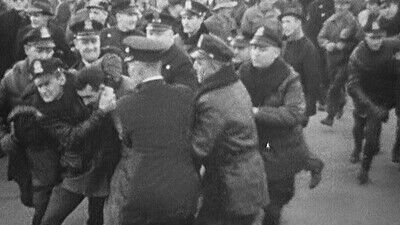The documentary continues to show the evolution of policing, how wartime influenced police tactics, how after slavery ended Black Codes gave white citizens the power to arrest their Black neighbors, all of these small tangents that led to where we are today. Through straight to camera interviews, professors explore the various philosophical and sociological reasons why Black communities were treated differently and how that treatment was justified, how white privilege played a role in allowing once persecuted populations like Irish and Italian Americans the chance to move up in the social hierarchy by joining the ranks of those that once terrorized their communities, the effect of using violence as a tool for control and how it tips into fascism that may threaten our democracy.
In addition to the many scholars and experts interviewed, Ford follows Charlie Adams, a Black member of Minnesota’s police force who struggles with the shortcomings of his profession and is affected by the violence he’s witnessed in his line of work. He adds a personal perspective I haven’t seen covered elsewhere on this topic. Adams gives a measured testimony, wavering between the emotional stories of young children losing their life to gun violence and matter-of-factly explaining the history of his line of work. Through Adams, we get a firsthand account of how the justice system is failing Black children, and how supporting other Black officers on the force has cost him professionally. He acknowledges things need to change but remains in the line of duty perhaps in hopes that he will see some of those changes.
Throughout “Power,” Ford asks thought provoking questions to his audience and even to some of the expert lecturers. When one of the speakers declares “we” allowed police to get away with brutality, Ford pushes back, asking who does “we” refer to? Our present-day selves did not sign off on centuries of inequality, it is something we have inherited. In another portion, Ford blurs or blots out some of the more fatal police footage. Do you need to see the moment of death to believe it? In another moment, he features a clip of a 1950s-style police officer hugging his family as the audio of an incident of police brutality plays in the background, creating a jarring sense of cognitive dissonance between the images we have seen of police in the media versus the footage of brutality police would rather the public not see.

